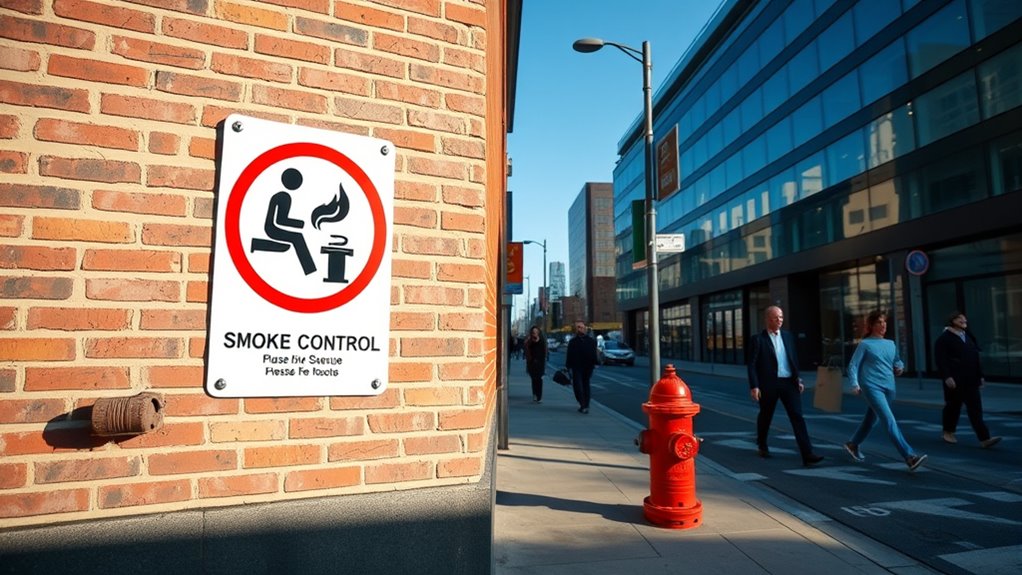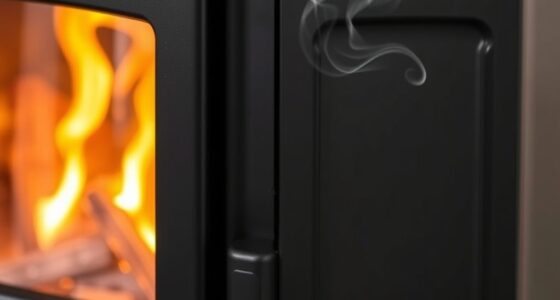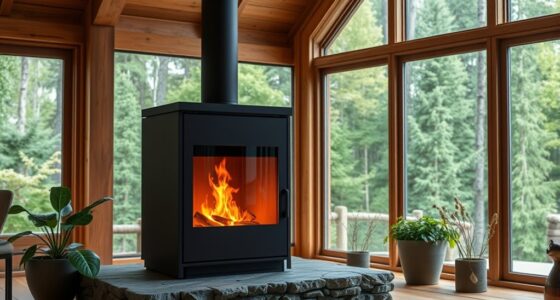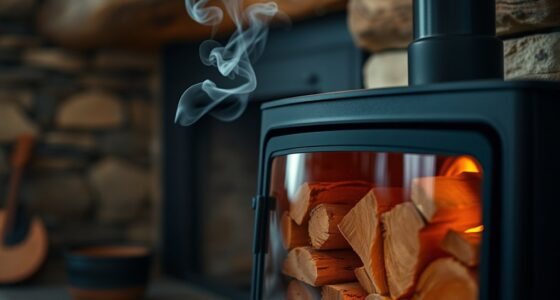Local ordinances and smoke-control zones are regulations designed to improve air quality in your community. They limit outdoor burning, restrict smoking in public spaces, and control the use of fuels that worsen pollution. Enforcement can be challenging, but strategies like public education, warnings, and fines help guarantee compliance. By understanding these rules, you can help contribute to healthier air. Keep exploring to learn more about how these regulations protect your environment and health.
Key Takeaways
- Smoke-control zones are designated areas with regulations to reduce air pollution and protect public health.
- Local ordinances establish rules against outdoor burning, smoking, and using pollutants-worsening fuels within these zones.
- Enforcement involves monitoring, public education, warnings, and fines to ensure compliance with smoke-control regulations.
- Challenges include limited resources, large area coverage, and ensuring residents understand and follow the rules.
- Effective implementation balances strict enforcement with community engagement and awareness efforts.

Many cities establish local ordinances to create designated smoke-control zones, aiming to reduce air pollution and protect public health. These zones restrict specific activities like outdoor burning, smoking in public spaces, and the use of certain fuels that contribute to poor air quality. The goal is to improve overall air quality, making urban environments healthier for residents and visitors alike. When these ordinances are effectively implemented, you’ll notice a tangible reduction in airborne pollutants, leading to fewer respiratory problems, less smog, and a cleaner environment. However, the success of these policies depends heavily on enforcement.
Effective smoke-control zones reduce pollution and improve urban air quality when properly enforced.
Enforcement challenges are a significant hurdle in maintaining the integrity of smoke-control zones. You might find it difficult to monitor every area continuously, especially in large cities or densely populated neighborhoods. Many cities rely on a combination of patrol officers, surveillance cameras, and community reporting to identify violations. Despite these efforts, some individuals may still attempt to bypass regulations, either out of ignorance or intentional disregard. This creates a constant struggle to uphold the rules and ensure compliance. Without consistent enforcement, the effectiveness of smoke-control zones diminishes, and air quality improvements can stall or even reverse.
One common enforcement challenge is balancing education and penalties. You need to inform residents about the importance of smoke-control zones and the potential health benefits, but also establish clear, enforceable consequences for violations. If people don’t understand the reasons behind the rules, they’re less likely to comply voluntarily. Conversely, overly strict penalties might generate resistance or legal disputes. Cities often find that a combination of public education campaigns, warning notices, and fines works best. Yet, even with these measures, some violations slip through the cracks, especially when resources for enforcement are limited. Additionally, high-quality projectors with accurate calibration can help in monitoring compliance through visual evidence.
Another issue is the difficulty in distinguishing between intentional violations and accidental ones. For instance, a homeowner might unknowingly burn prohibited materials or fail to realize their activity breaches local ordinances. In such cases, enforcement agencies need to be flexible, offering warnings or educational opportunities before resorting to penalties. This approach fosters community cooperation and helps build trust between residents and authorities.
Frequently Asked Questions
How Are Smoke-Control Zone Boundaries Determined?
You determine smoke-control zone boundaries by considering air quality standards and zone boundary mapping. Authorities analyze pollution levels and potential sources to identify areas that need protection. They then map these zones carefully, guaranteeing they align with air quality goals. This process helps create effective boundaries that minimize smoke impact on communities, maintaining better air quality. Your understanding of these factors ensures zones are accurately designated for health and safety reasons.
Can Residents Appeal Smoke-Control Zone Designations?
You can appeal smoke-zone enforcement decisions through a formal resident appeal process. Typically, you submit a written request to the local authority explaining your reasons for contesting the designation. During the appeal, your concerns are reviewed, and you may present evidence or arguments. Keep in mind that resident appeals aim to ensure fair application of smoke-control zone regulations, and authorities evaluate each case before making a final decision.
Are There Exemptions for Medical Reasons Within Smoke Zones?
Yes, there are medical exemptions within smoke zones. If you have a valid medical reason, such as respiratory issues or allergies, you can apply for smoke zone exceptions. You’ll need to submit documentation from your healthcare provider to support your request. Once approved, you may be granted special allowances to reduce exposure, helping you manage your health while complying with local smoke-control regulations.
How Often Are Smoke-Control Regulations Reviewed and Updated?
You might be curious about how often smoke-control regulations are reviewed, which is vital for maintaining air quality. Authorities typically revisit these rules every few years, aligning updates with evolving enforcement strategies and scientific insights. This periodic review ensures regulations stay effective, balancing community health with practical enforcement. Staying informed helps you understand how regulations adapt to new challenges, ultimately safeguarding your environment and health through continuous improvement.
What Penalties Exist for Violating Smoke-Control Ordinances?
If you violate smoke-control ordinances, you face fine penalties that can be substantial, depending on the severity of the violation. Enforcement actions may include warnings, citations, or even legal proceedings. Local authorities actively monitor compliance, and repeated violations can lead to increased fines or other penalties. It’s essential to adhere to the regulations to avoid these consequences and help maintain air quality standards in your community.
Conclusion
Understanding local ordinances and smoke-control zones is like having a map to navigate a smoky maze. By following these rules, you become a responsible explorer, clearing the air for everyone. Think of it as planting seeds of clean air in your community’s garden, ensuring it blooms bright and healthy. So, embrace these regulations—they’re your compass to a safer, fresher environment, turning the haze into clarity for all to breathe easy.










